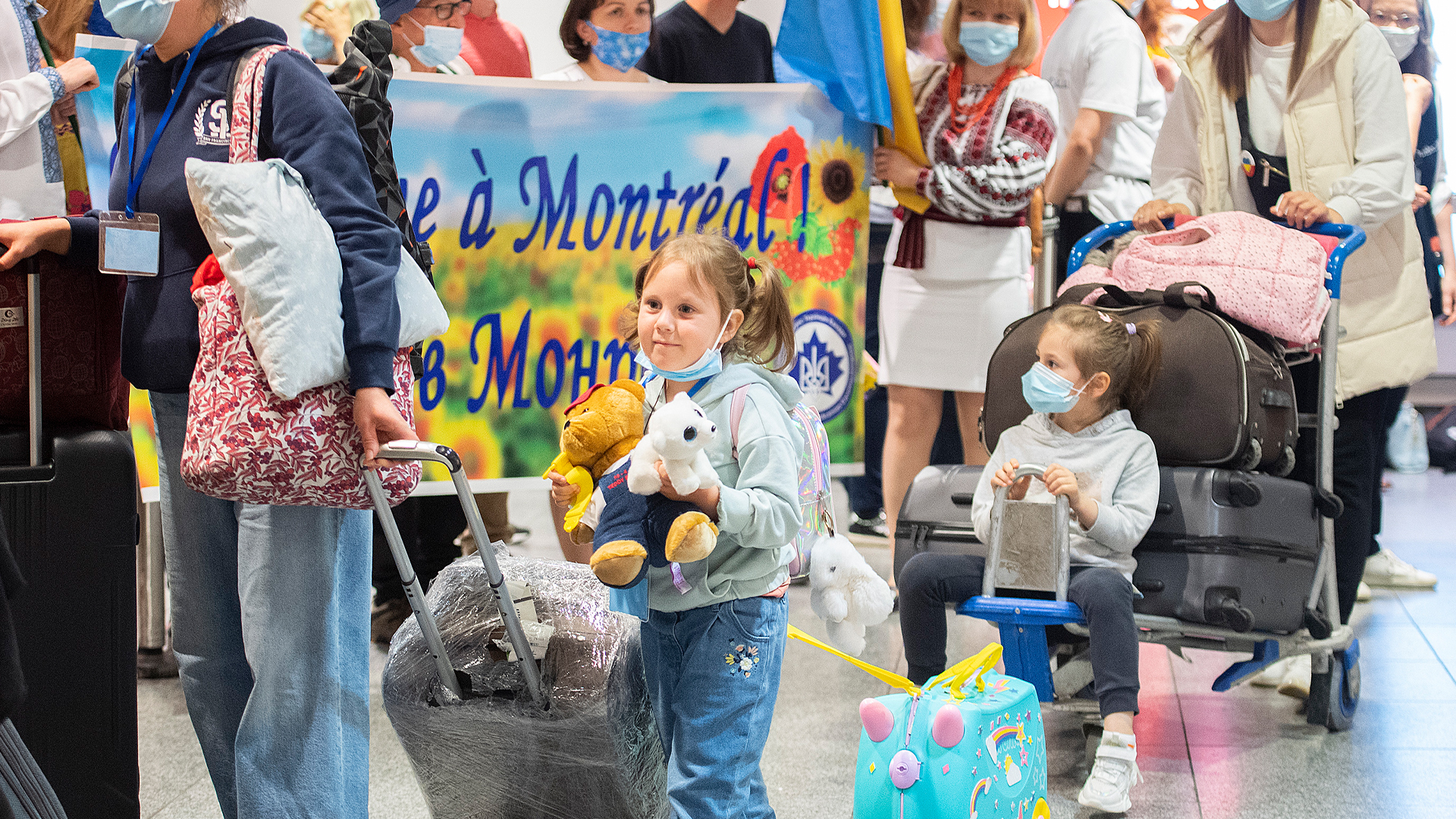
The world is accustomed to the stereotypical face of the refugee. The well-worn images of the Black or Brown face from post-genocide Rwanda, war-torn Somalia, or gang-ridden Honduras. According to the United Nations High Commissioner for Refugees (UNHCR) there are 32.5 million refugees and an estimated 103 million forcibly displaced people worldwide. That is one-in-77 people on earth.
Refugee crises have become normalized. The world seems to shake its collective head as each crisis enters its consciousness. People mutter sympathetic words and unvaryingly move on.
It has been personally challenging to witness the collective global response to a relatively atypical refugee face: a fair-skinned and straight-haired version of displacement. I have stood at one of Canada’s busiest international airports – airports that are welcoming thousands of Ukrainian travellers – and asked myself: Why has Canada been so welcoming to Ukrainians, unlike Syrians, Iraqis, Afghans and Rohingyas? Is it because they are white skinned?
When President Vladimir Putin invaded Ukraine in February 2022, the Canadian government swiftly enacted the Canada-Ukraine Authorization for Emergency Travel (CUAET) allowing an unlimited number of Ukrainians fleeing war to work, study, and stay in Canada for up to 3 years.
Since the onset of CUAET, more than 167,585 Ukrainian nationals have arrived in Canada by land or air. In comparison, only 28,200 Afghan nationals have arrived in Canada since August 2021 under all immigration streams, including federal refugee resettlement programs. This despite the human rights, political and economic threats facing so many in Afghanistan.
The emotional and political reaction to different global situations has resulted in differential treatment for people fleeing violence. While Canada eliminated its red tape to welcome an unlimited number of Ukrainians, including through direct flights, Afghans still face uncertainty, long delays and a 40,000-person limit to resettle in Canada.
A Convention designed for war
The 1951 Refugee Convention was formed to safeguard European refugees in the aftermath of the Second World War. The convention defines a refugee as a person who has fled their country because of a well-founded fear of persecution on one of five grounds: race, religion, nationality, membership of a particular social group or political opinion.
Despite needing to flee to find safety and being categorized as refugees in other countries, in Canada, Ukrainians do not arrive as refugee claimants. The government has given them special treatment.
The problem with Canada’s creation of who constitutes an “ideal refugee” is that it starts a debate over who is deserving of protection and who is not. This poses the question: Is a refugee a refugee, no matter where they come from?
During war, everyone in the invaded country has a well-founded fear of persecution. The principle of non-refoulement states that no one should be returned to a country where they would be in danger of being subjected to violations of certain fundamental rights.
Over the years, the relevance of this convention has been called into question. It is difficult to explain its relevancy when countries, such as Canada, close their doors to refugees fleeing conflict in the Middle East or Latin America, but open doors to Ukrainians.
The racist distinction between supposedly civilized and non-civilized populations comes as no surprise as this logic is deeply ingrained in the migration and refugee policies themselves. What is happening with Ukrainians unveils its existence.
Refugee law is political
International refugee law is developed in a political context. It is not aimed simply at helping refugees – it’s also a tool for states to manage the movement of people.
The result is that less than one per cent of refugees are resettled every year.
While the current response to Ukraine is evidence of the enormous capacity to host refugees, it also reveals selective generosity based on the idea that some refugees are more deserving than others.
Ukrainians fleeing war and persecution should be able to seek safety. But so should all refugees. Unfortunately, the existing legal infrastructure contributes to vastly unequal outcomes for people fleeing conflict, depending on factors such as skin colour, ethnicity and country of origin.
The incoherence of Canada’s refugee policy
Governments must match civil society efforts to welcome refugees
On the one hand, I appreciate the evidence of the goodness of humanity in the face of a senseless war. On the other hand, I am contending with the reality that certain faces do not move the empathy needle in Canada to the same degree. What does it mean to witness deserving refugees ignored while others are helped?
These contrasts imply a racist logic that positions some people as vulnerable, and others as beyond the realm of moral obligation to receive protection. The imaginary racial boundary among those selected and deselected explains this difference in treatment. This boundary is so entrenched, that even when racism is pointed out, it is difficult for many to avoid.
At a time when Russia’s invasion represents a threat to the world’s democracies, Canada’s response to refugees from Ukraine should be an opportunity for expanding the way we treat refugees from other war zones around the world.
We must demand safety for all refugees as well as Ukrainian nationals.










